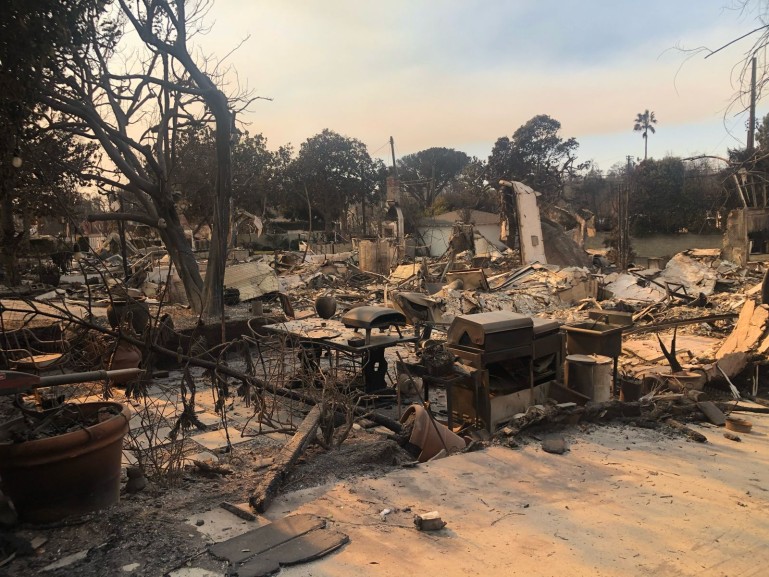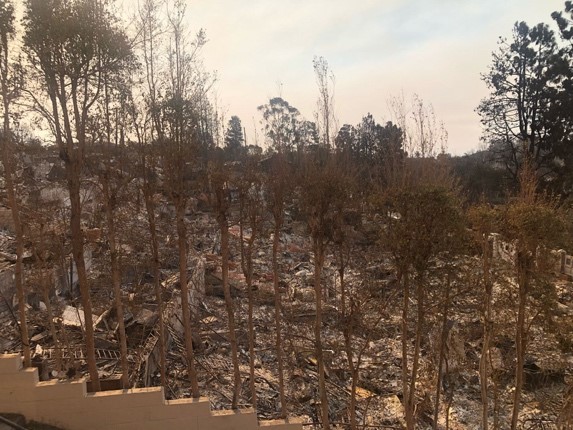

14.02.2025
Los Angeles, January 31, 2025. The air is still thick with ash and smoke, and my neighborhood looks like a war zone. Over 17,000 buildings have been reduced to ashes in one of California’s most devastating wildfire seasons in history.

In the days that followed, many voices rose to blame wood, used in 90% of these constructions. This criticism, echoed by some in France, immediately reminded me of the story of the three little pigs and their houses made of straw, wood, and brick. But in the real world, the facts are not so simple.
One often-overlooked point in these discussions is that the buildings that remained standing were not necessarily concrete structures. Many were buildings that benefited from specific protective measures, such as fireproof treatments or architectural solutions tailored to prevent fires.

Contrary to popular belief, wood is not a ticking time bomb in the event of a fire. Scientific research shows that wood is an excellent thermal insulator and burns slowly. It transmits heat 12 times more slowly than concrete, 250 times more slowly than steel, and 1,500 times more slowly than aluminum (Fédération Nationale du Bois, "Wood and Fire Safety").
Additionally, when exposed to fire, a charred layer forms on its surface, further slowing combustion and preserving the structural integrity of the wooden element (France Bois Forêt, "Wood and Fire Behavior"). This is even more true for tropical woods, which stand out due to their density and natural resistance to flames. Indeed, several studies highlight that tropical species, often denser, provide better fire protection than temperate woods.
For example, studies show that under extreme heat, wood loses only 10–15% of its total strength, a figure much lower than one might think (CSTB, "Thermal and Mechanical Properties of Wood Under High Temperatures"). Wooden beams and structures remain stable for longer than their steel counterparts, which tend to deform and collapse rapidly under heat. Even firefighters recognize this advantage, as regulations allow them to intervene for longer under wooden frameworks compared to those made of concrete or steel.
The environmental benefits of wood are undeniable. As a renewable resource from sustainably managed forests, wood stores carbon dioxide and contributes to combating climate change (France Bois Forêt, "Wood’s Contribution to Carbon Neutrality"). Additionally, its transformation requires less energy than concrete or steel, thus reducing the carbon footprint of buildings (Ademe, "Life Cycle Analysis of Construction Materials").
Tropical woods, particularly when certified, play a key role in this equation. Their natural durability, resistance to extreme conditions, and contribution to sustainable forest management models make them a valuable choice for resilient and environmentally responsible construction projects.
California’s wildfires revealed weaknesses in urban planning and building codes, but this does not justify vilifying wood. These events instead highlight the need to strengthen prevention measures, such as creating defensive spaces, using fire-resistant treatments, and adhering to strict standards (Fédération Nationale du Bois, "Urban Fire Prevention and Management"). When used responsibly and treated correctly, wood is not only safe but also essential for building resilient and sustainable communities.
In France, despite a challenging economic context, the wooden construction market continues to grow. According to the National Wood Construction Survey (ENCB), "the wood construction market in France has achieved stable revenue, with increasing market shares in sectors such as public and residential buildings" (ENCB, 2023 Report). Furthermore, the 2023 National Wood Construction Survey reports that wood represents 9.7% of single-family homes, 4.6% of multi-family housing, and 16.8% of non-residential buildings (France Bois Forêt, "Annual Report on Wood Construction in France, 2023").
It is therefore essential to seize this opportunity to promote the potential of wood instead of perpetuating outdated stereotypes. Architects and builders must recognize that modern wood products, including tropical and engineered woods, combine tradition with advanced fire-resistant properties (Fédération Nationale du Bois, "Innovative Wood Products").
What if we rewrote the story of the three little pigs? The wooden house, built with certified wood from sustainably managed forests, could withstand the blows of the big bad wolf—not thanks to fairy tale magic, but to science and expertise.
The wildfires in Los Angeles highlight the challenges posed by climate change and urban expansion. But blaming wood is not the solution. It is time to educate, innovate, and invest in sustainable materials like wood, which benefit both people and the planet (Fédération Française du Bâtiment, "The Role of Wood in Sustainable Construction").
As my city and its residents strive to recover from this disaster, I remain convinced of the need to defend wood, particularly tropical wood, as a resilient, ecological, and safe material. Let’s not allow misconceptions to undermine its potential for a sustainable future.
Nathalie Bouville
Communications Manager, ATIBT
Los Angeles, California